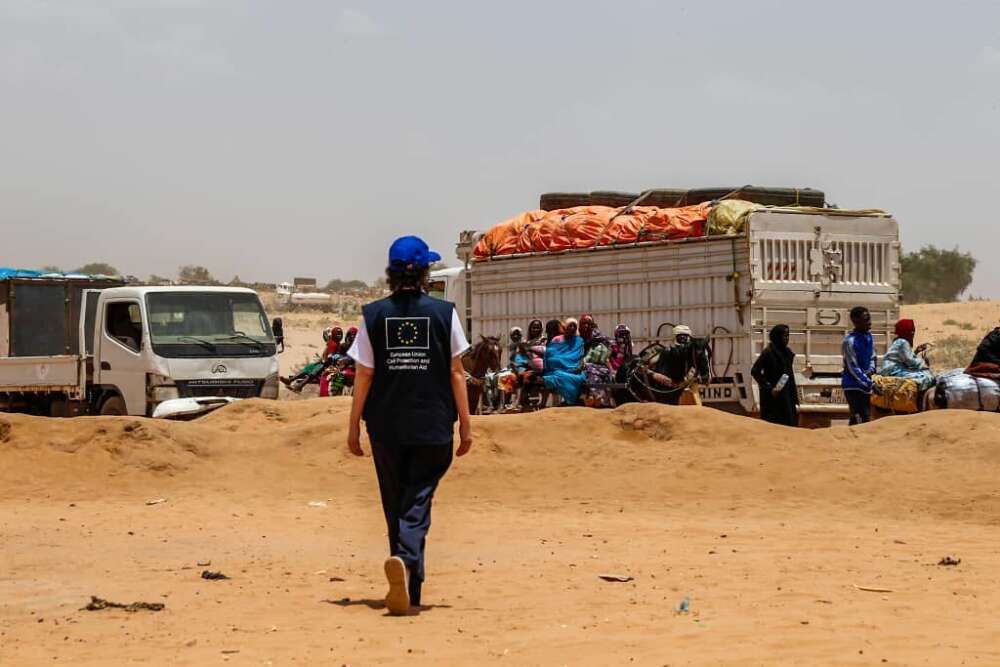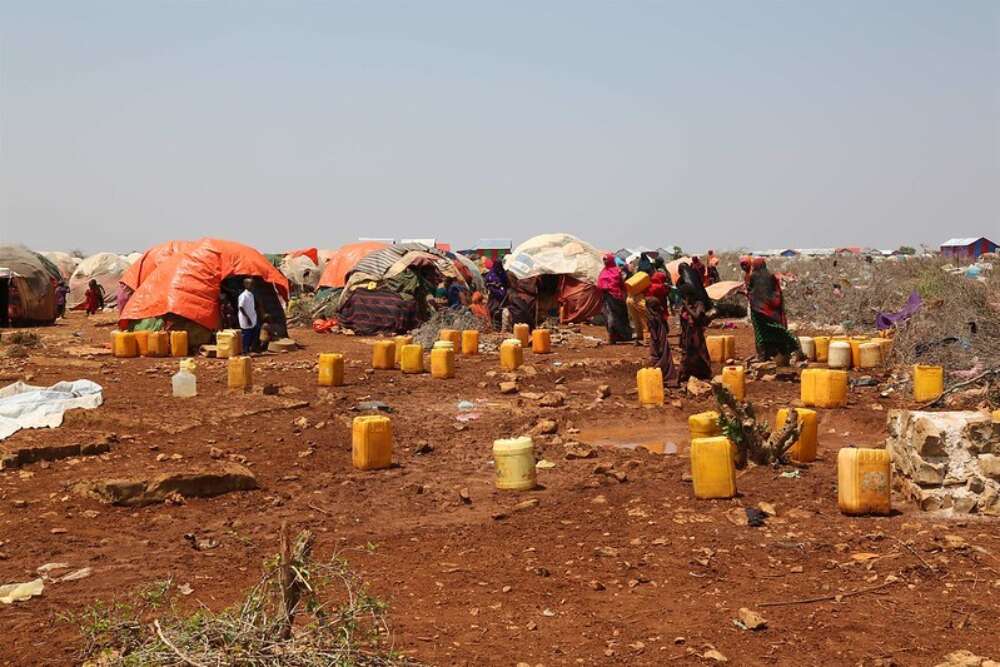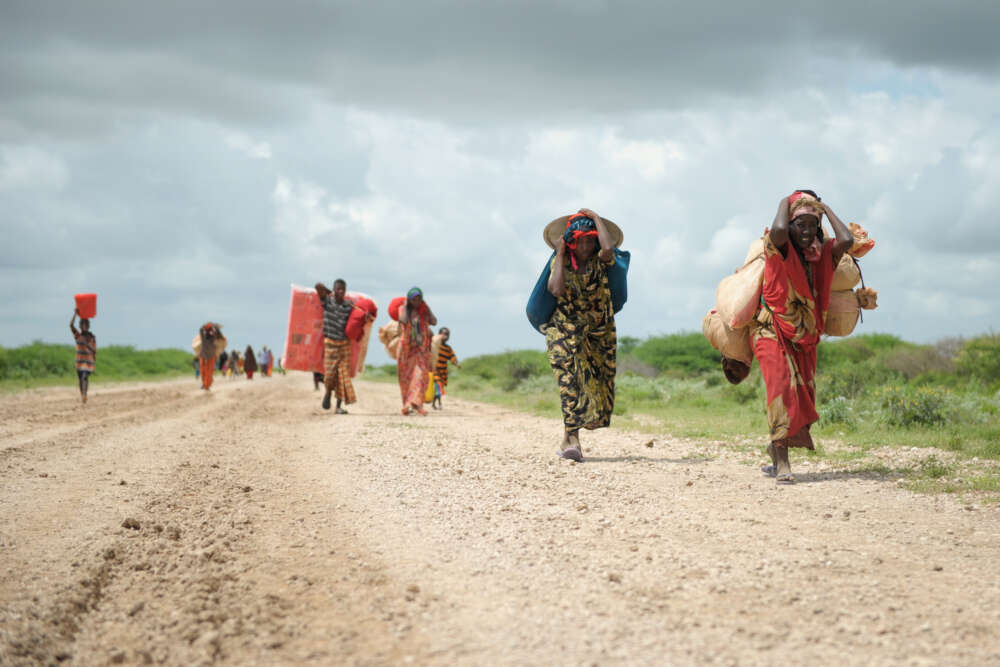Why Humanitarians Should Tell a More Hopeful Story
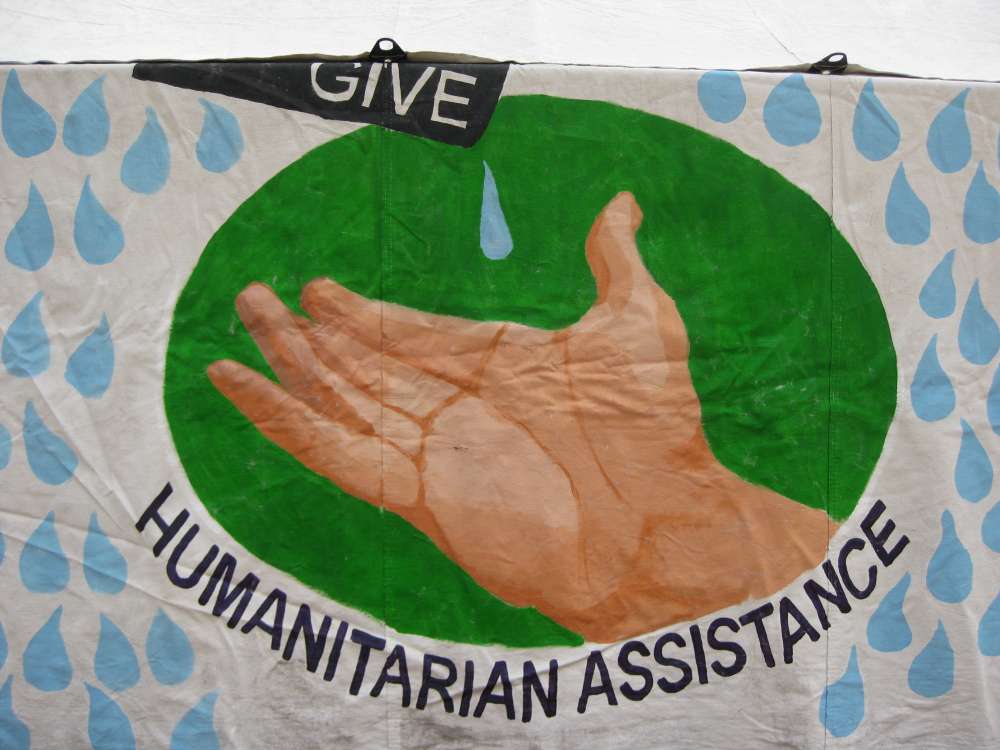
Feeling down about global affairs in 2024? You’re not alone. Humanitarian leaders often sound like the most pessimistic among us. The heads of UN agencies and NGOs portray a world that’s increasingly harsh and in endless need. It’s a gloomy refrain: Humanitarian needs are at “record levels.” The emergency aid system is “underfunded,” “overwhelmed” and nearing a “breaking point.”
The media amplifies this, mistaking fundraising calls for an accurate assessment of the humanitarian state of the world. It’s no wonder that public perception aligns: The world is in shambles, the assumption goes, and finding a way forward is more difficult.
Yet as appalling as crises in Gaza, Ukraine or Sudan are, the narrative of a world in greater humanitarian need than ever before is misleading and self-defeating. A closer look at global data reveals a more nuanced – and even a more hopeful – reality. Donor humanitarian funding has grown significantly. The scale of conflict and suffering today must be seen through a decades-long lens. Governments, communities – and yes, humanitarians – have made strides in reducing disaster deaths, and in averting famines.
Today’s crises are urgent, and the climate emergency will bring new and, by most predictions, truly unprecedented challenges. But for its long-term credibility and sustainability, the humanitarian sector should get past its hyperbole and tell a more realistic story.
More Money, More Problems?
A more accurate state of global affairs begins with the money. First and foremost, official development assistance (ODA) has soared. The money wealthy countries provide in aid has more than doubled over the past decade, in absolute numbers. Even ignoring a sizeable portion improperly counted as refugee costs domestically, donor aid was at an all-time high in 2022, and humanitarian funding had more than doubled over a decade.
Over 20 years, public aid funding has also risen relative to national income. Rich nations have increased the share of income that they spend on aid by 55 percent. It falls short of decades-old commitments to deliver 0.7 percent of gross national income in aid, but it represents an upward trend after years of decline.
Contrary to popular belief, humanitarians have never had more resources at their disposal. Humanitarian funding has jumped by more than 30 percent since 2016. There are parallel trends in the growing number of humanitarian workers, job postings and NGOs.
It’s true that costs have risen with global economic turbulence. Humanitarian funding levels in 2023 also dropped compared to a year earlier: down to some $30 billion at year’s end, according to preliminary numbers tracked by the UN, compared to $41 billion. This is no doubt painful for people affected by aid cuts as agencies reduce their budgets. But the substantial growth that came before must also be considered.
Individual organizations, perhaps most prominently the ICRC, have made significant cuts, citing funding shortfalls. Its 2024 budget is forecast at around 2.1 billion CHF – a 25 percent drop from a year earlier. But the full picture includes the fact that its 2023 appeal was the organization’s biggest ever – more than double what it was a decade ago.
The Nuance Behind Needs
What about the claims of unprecedented needs? Aid agencies like to remind us that “the number of people who need humanitarian assistance has never been higher” or that “global instability is increasing.” This bleak picture is only true if you choose to ignore history, and those who were in need before humanitarian agencies started counting people according to their definitions.
The world has seen dark times: The bloody partition of India in 1947 killed more than 1 million and uprooted 14 million. And what about the Korean War (1950 – 1953), the Vietnam War (1955 – 1975), Bangladesh’s Liberation War (1971), or the millions of lives shattered when the Soviets invaded Afghanistan in the early 80s, or when their union dissolved during the early nineties? What about the Rwandan genocide, or the Bosnian genocide amid conflicts in the Balkans?
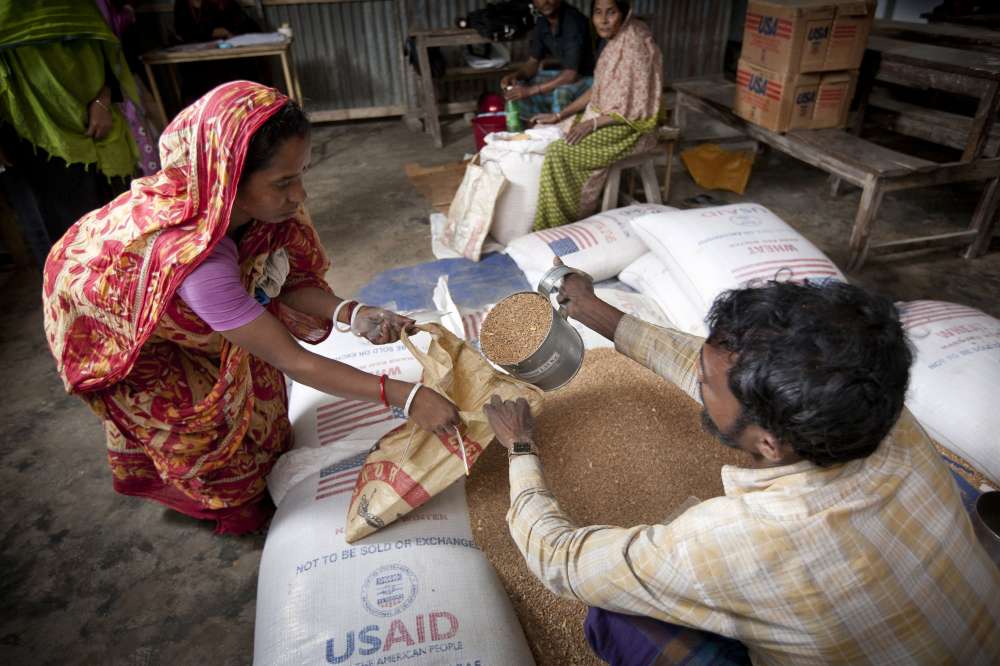
Every person killed in conflict is one too many; every child, man or woman starving should stain the global conscience. But our views of how violent the world really is are easily skewed by media attention and double standards. When asked to name the country with the deadliest recent conflict, how many would have named Ethiopia?
Messaging on disasters and famine would also benefit from a longer-term outlook. Deaths from disasters are low compared to previous periods, thanks to marked gains in early warning and preparedness, with countries like Bangladesh leading the way. Meanwhile, agencies like the World Food Programme have intensified their global advocacy on famine. The world is “hungrier than ever,” according to their analysis. But this overlooks the long-term decline in famines, their geographic spread and their severity.
The marked decrease is chiefly due to advancements in agricultural technology, logistics and trade in the case of famine, as well as more effective government policies. But humanitarians who pushed early warning systems, preparedness and effective emergency response could take some credit – and focus on what’s possible, instead of falling back on doomsday predictions.
Keep Calm and Keep Improving
The humanitarian hyperbole might seem helpful for short-term fundraising purposes, but repeating a false narrative comes at a price in the long run. Donors won’t fully support a system that keeps insisting it’s on its last legs. Crying wolf too often makes advocacy less effective when atrocities are being committed. The public will tune out from repetitive messaging. A realistic assessment of the world today is vital to inform the right strategic and operational decisions for tomorrow.
Instead, humanitarian leaders should point to past successes while making demonstrable progress on the reforms they have rightly committed to – whether it’s finally making headway on localization, or moving from paying lip service to accountability and participation to actually empowering affected people in decision-making. We can afford continuous improvements – the sector will need them to face the climate crisis ahead.
If donors are to maintain their funding, it will be because they view it as an investment in a system that has professionalized remarkably over past decades, while saving countless lives. At the moment, humanitarians are perpetuating the dark rhetoric that donor funding is a Band-Aid patched onto a sector on the brink of collapse.
All of this would be helped by a more transparent and comparable analysis of global need. The humanitarian system has invested considerable time and resources to develop methodologies to understand humanitarian situations and crises, from an inter-agency needs assessment task force in 2009 and a workstream of the Grand Bargain, to more recent investments in the Joint Intersectoral Analysis Framework.
Still, the indicators humanitarians use to calculate the number of people in need, and the severity of those needs, varies considerably from year to year. The conceptual definition of being in need also varies, as clusters conflate needs-based, rights-based or risk-based estimates. More rigorous and scientific approaches to compare the evolution of needs over time are possible.
Topline figures from the UN’s appeals are of limited use to show the state of the world. And the gloomy narrative often pushed by humanitarian leaders will do little to improve the system. With luck, 2024 will bring us closer to a realistic narrative about the world, humanitarian achievements, and what an efficient aid system is capable of – rather than the same doomsday scenarios all over again.
This commentary was first published in The New Humanitarian, on January 17, 2024.
For more independent journalism covering the people affected by humanitarian crises around the world, visit The New Humanitarian’s website.

